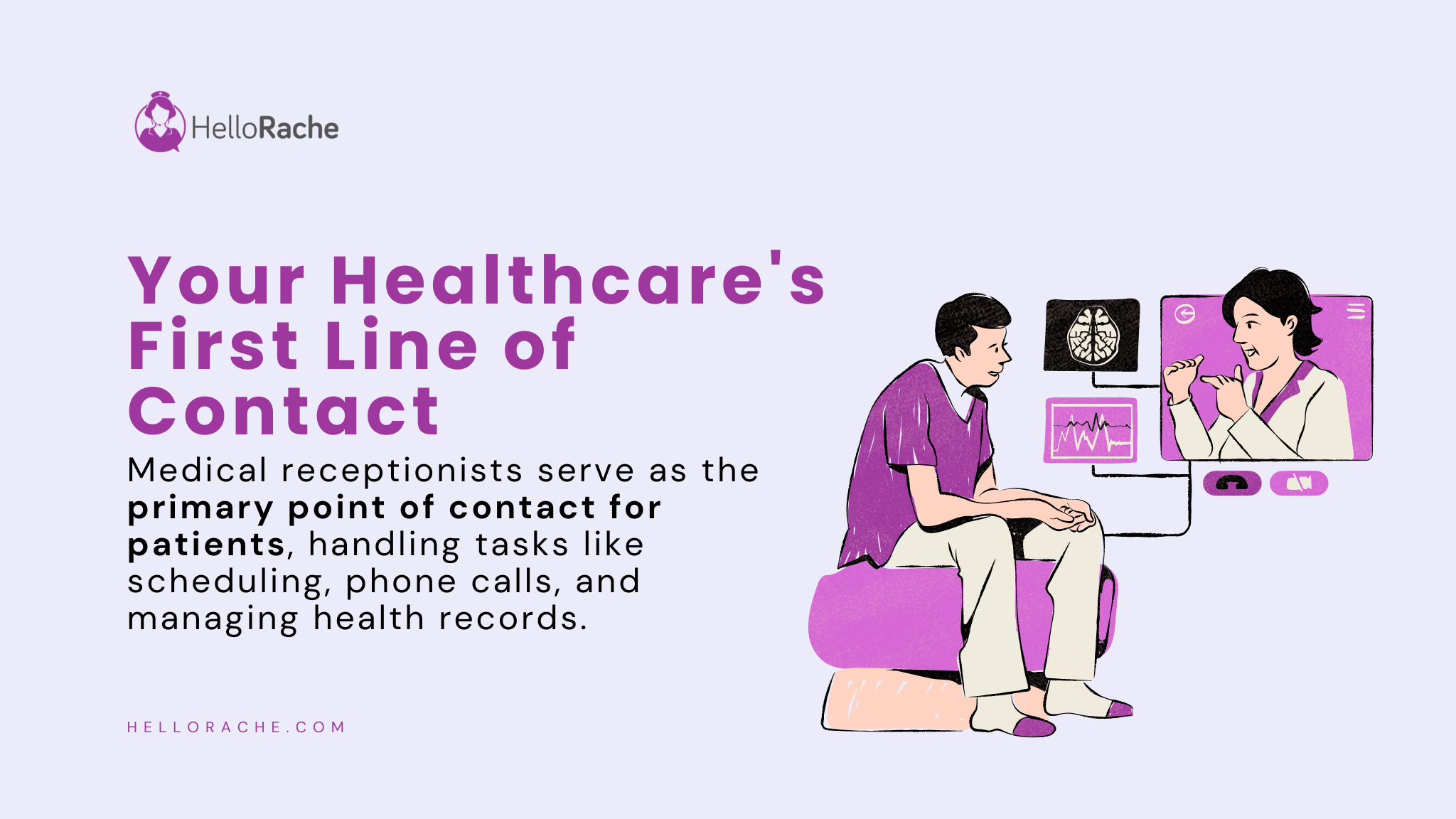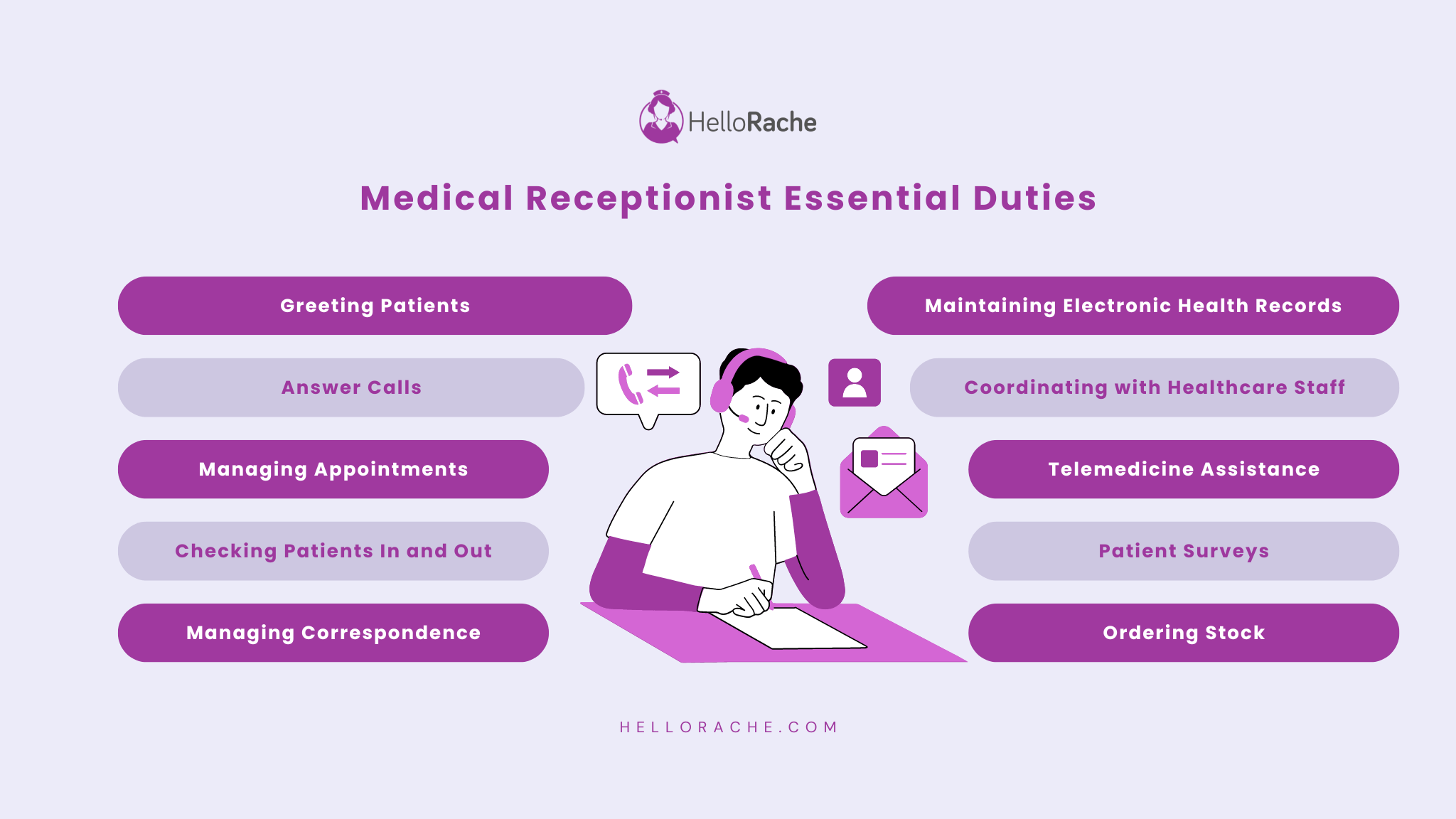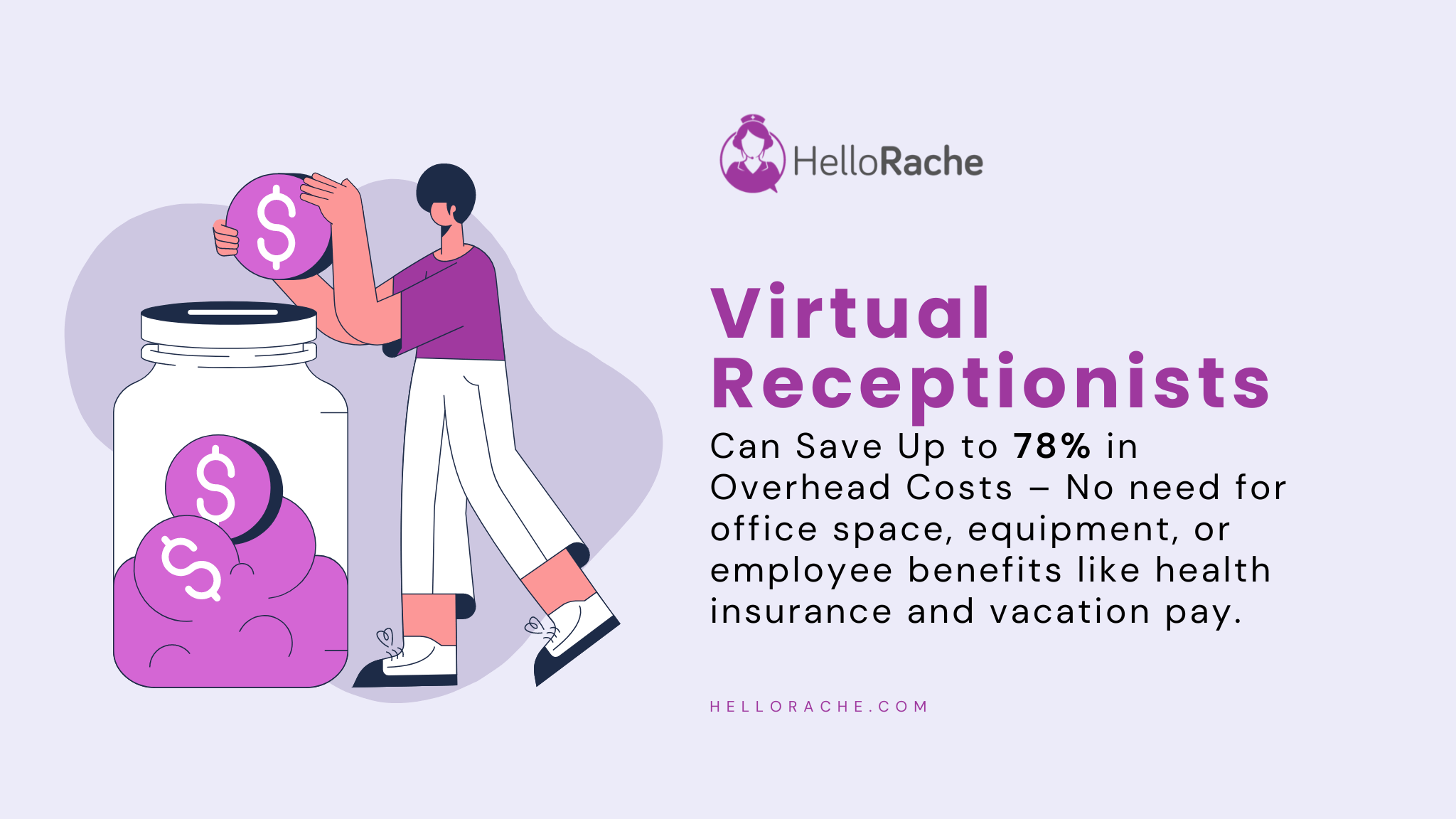Interested in smooth business operations, a whole host of cost savings, and enhanced productivity? Of course you are, and as a healthcare provider, you want to do this to transform your service and give your patients the service they deserve. But this is surely easier said than done. Well, you’d be surprised, as a virtual medical receptionist has the potential to help you do all of this. The only thing you need to do is draw up a list of medical receptionist duties and let them get to work.
Medical Receptionists: An Essential Employee
If you want to start building a list of medical receptionist duties, it helps to understand the principles of a medical receptionist. Positioned as the first point of contact for your healthcare business, medical receptionists can be found in clinics, a doctor’s office, or a hospital. Wherever they’re located, their primary role is to greet patients and manage the administrative side of patient care. After checking patients in, they will typically ensure all the necessary information is in place such as identification, completed health questionnaires and insurance details. A medical receptionist will also be heavily involved in appointment scheduling and answering phone calls.
But medical receptionists are much more than basic administrative machines. Their talents extend to much more complex tasks. And, often, taking these duties on will reduce the pressure on your healthcare professionals, minimizing their risk of becoming overworked and burnt out. These key responsibilities of a medical receptionist include updating patient records in the EHR, managing billing, processing payments, and making sure all of this follows the strict privacy guidelines outlined by the Health Insurance Portability and Accountability Act (HIPAA).
Medical receptionists have been in place in many healthcare businesses for decades, and are renowned for creating warm, welcoming environments which put patients at ease. However, times change, and the rapid advancement of internet technology now means there’s a modern alternative: the virtual medical receptionist.

Virtual Medical Receptionists: A Modern Upgrade
A forward-thinking medical business should always be looking ahead and seeking to embrace innovation. And a virtual medical receptionist is the epitome of this progressive approach. But virtual assistants are new, and many healthcare providers are unsure of who they are and how they work. More importantly, how can you be sure that your medical receptionist duties will be well handled by a remote worker?
To get a better understanding of the virtual assistant landscape, let’s look back to the early 2010s, when having an in-house medical receptionist was the standard. Braving bad weather, public transport, and traffic, these employees would physically come to the office every day, working a typical 9-5 shift and directly assisting healthcare providers and patients. However, advancements in technology soon changed the playing field.
With the growth of internet capabilities, remote work became not only possible but highly practical. A virtual assistant could connect to a medical business with just a computer, reliable internet access, and a set of login credentials from the organization. Fast forward to 2024 and the improved speed and capacity of modern internet services allows vast amounts of data to be transmitted seamlessly, marking virtual roles out as highly efficient.
The popularity of virtual assistants has grown steadily throughout the last decade but surged during the COVID-19 pandemic, when remote work became crucial. And the global reach of the internet means your employee search can now reach every corner of the planet. In particular, Filipino virtual assistants make up a significant proportion of the virtual assistant workforce and this new, digital setup allows you to easily connect with these world-class assistants.
Get Ready to Delegate These Medical Receptionist Duties
The exciting world of virtual assistants means that it’s never been easy to assign medical receptionist duties to an expert in their field. Blessed with a wealth of experience, virtual medical receptionists can streamline your processes, enhance productivity, and help to transform your patient care. The key responsibilities of a medical receptionist include:
-
Greeting Patients:
One of the most important medical receptionist duties involves greeting patients as they arrive at your healthcare facility. Now, you may be wondering how a virtual medical receptionist can do this remotely, but the answer is deceptively simple: videoconferencing. Thanks to improved internet speeds, all you need to do is set up a tablet in your reception area and, once your patient signs in, they can be greeted by your medical receptionist to assist. This ensures that your patient feels both welcomed and comfortable. -
Answer Calls:
Following the pandemic, people are a lot sicker these days, and this is leading to unprecedented demand for healthcare providers. This means a lot of phone calls are being made by patients and auxiliary services. Naturally, your healthcare professionals are too busy providing patient care to man your phones all day, but a virtual medical receptionist can handle this with ease. By answering your incoming calls, they can redirect them to the relevant person, provide updates, and take messages for your clinical team. It’s an approach which both enhances your communication levels and allows your medical professionals to focus on their core tasks. -
Managing Appointments:
Your list of medical receptionist duties should have appointment management near the very top. An experienced medical receptionist can oversee your entire scheduling system, which means patient appointments will be booked, confirmed, and rescheduled efficiently. And balancing the availability of your healthcare professionals with your patients’ needs is far from easy, so it makes much more sense to delegate this to your medical receptionist rather than, for example, your physicians. -
Checking Patients In and Out:
As part of the patient greeting process, your virtual medical receptionist can continue the personal experienced by checking patients in. This allows them to collect patient information, verify insurance details, and update medical records. This saves your clinicians valuable time as it ensures they have all the relevant information at their fingertips when they meet the patient. Additionally, it provides an opportunity for the patient to raise any queries early on. Finally, at check-out, your virtual medical receptionist can schedule follow-ups and handle billing. -
Managing Correspondence:
A crucial element of all successful healthcare providers is first-class correspondence. But the sheer volume of correspondence required can put a huge strain on your clinical team. A dedicated medical receptionist, however, can manage incoming and outgoing correspondence, including emails, faxes, and letters. With their timely handling of correspondence, medical receptionists make sure patients and healthcare professionals receive all necessary information. -
Maintaining Electronic Health Records:
A cornerstone of excellent patient care is up-to-date and accurate patient records. So, it’s vital that these are maintained professionally. The problem is that healthcare professionals are already rushed off their feet, and further admin demands will only push them towards breaking point. Luckily, a virtual medical receptionist can take this in their stride. They can input patient data, update insurance details, and organize medical documents.
-
Coordinating with Healthcare Staff:
Medical receptionists act as an essential contact point between patients and medical staff, facilitating clear and seamless communication. Their presence allows important information, such as patient concerns or urgent requests, to be passed on to the relevant clinician. This optimizes communication between your patients and clinical team while contributing towards beneficial health outcomes. -
Telemedicine Assistance:
With the adoption of telemedicine services continuing to rise, one of the key responsibilities of a medical receptionist should be assisting with telemedicine appointments. Their prowess with digital technology positions them as an authority when it comes to scheduling virtual appointments, ensuring patients receive the correct login details, and troubleshooting technical issues before consultations. This minimizes missed appointments and enables your physicians and patients to connect seamlessly. -
Patient Surveys:
Listening to your patients is paramount if you want to improve your service quality. Patient satisfaction surveys are an effective way to gather feedback and provide insights. As part of the check-out or follow-up process, a virtual medical receptionist can efficiently conduct these surveys, helping you identify areas for improvement, involve patients in shaping your services, and strengthening patient relationships. -
Ordering Stock:
A remote medical receptionist can help with ordering stock by monitoring inventory levels through digital management systems. Tracking the usage of medical and office supplies, they can identify when items are running low and place orders with your approved vendors to maintain stock levels. Additionally, they can liaise with suppliers to schedule deliveries, verify stock availability, and chase up outstanding orders. This keeps your organization well stocked and prevents disruption to patient care.

The Future of Your Healthcare Business Starts Now
The key responsibilities of a medical receptionist mark them out as a game changer for healthcare businesses. So, if you’re considering making the move towards a virtual medical assistant, the question is: where do you find the right one?
The Philippines is renowned for its skilled virtual assistants, known for their strong work ethic and exceptional healthcare expertise. And Filipino workers have earned a global reputation as efficient, hardworking employees, making them the ideal choice for your healthcare business.
Thankfully, reaching out to these professionals is easier than you think. Hello Rache has now been in the virtual assistant industry for many years, with a vast network to help handpick the perfect Filipino virtual medical assistant for you.
What’s more, Hello Rache offers these services at a competitive flat rate of just $9.50 per hour. No hidden fees, no contracts, no setup costs, and you can cancel at any time. You’ll work with the same assistant daily, track their performance through monitoring software, and have access to a dedicated account manager for support.
Transforming your healthcare operations is easy and affordable. Learn how Hello Rache can support your organization by clicking here and making your first step.
Discover what Hello Rache can do for you and your practice
Tell us a little about your practice & we will contact you within 24 hours.
SCHEDULE A CONSULTATION





